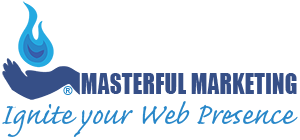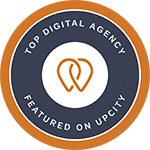
One of the biggest challenges with marketing small businesses? Crazy competition and a saturated market. The advancements in the last few years have made it very difficult for small businesses to stand out from the crowd.
Though age-old lead generation tactics like Meta ads and SEO do work, the investment in terms of time and money is very high. If you are stuck in this rut, then you need something unique, and untapped to supercharge the growth of your small business.
Enter LinkedIn Events—a power move for your online strategy. It can not just help you generate leads for your business but also help you retain them into long-term customers.
In this guide, let’s dig deep into how you can leverage one of the world’s most popular platforms like LinkedIn to host events and grow your business organically.
What are LinkedIn Events?
LinkedIn Events are an easy way to organize professional events like meetups, workshops, seminars, etc. The goal is to create more brand awareness, generate leads, and grow your professional network.

Why Should You Leverage LinkedIn Events?
There are several reasons why you should use LinkedIn Events for your small business:
- LinkedIn is the biggest social network of professionals. Using LinkedIn Events, you get to leverage this massive platform to grow your business.
- It’s free of cost, regardless of the type of LinkedIn account you have! You can create, host, and promote your event for $0. The potential for organic visibility is huge here.
- LinkedIn Events offers a host of professional tools that help you widen your network, grab attention from your target audience, and engage with them.
- Using LinkedIn Events, you can also choose to capture leads by adding a registration form for event sign-ups.
- LinkedIn Events offers a lot of flexibility as you get to host your event anywhere—offline, audio, LinkedIn Live, or even on external platforms.
- You can engage with the attendees before, during, and after the event via messages or by scheduling LinkedIn posts on the event feed, hence leading to a higher retention rate and conversion rate.
- LinkedIn Events offers a wide range of analytics for free that you can use to track the event ROI. You can also use this data to host more events in the future.

How to Use LinkedIn Events For Your Small Business?
Now that you know how groundbreaking can LinkedIn Events be for your business’ growth, let’s look at some tips and hacks on how you can leverage it:
1. Establish Clear Objectives
Do you aim for lead generation, enhanced brand visibility, or the establishment of thought leadership? Concrete objectives such as “securing 100 new leads” or “expanding our professional network by 25%” set a measurable benchmark for success.
This foresight ensures each decision you make—from the event type to the guest speakers—aligns with your goals. Working with a business coach can help you nail down the exact goals and objectives you want to achieve with the event.
2. Choose Event Type Based on Your Goals

Once you have set the objectives for your event, the next step is to decide on the type of event.
- Offline event – If you are organizing an offline event, you can promote your event and engage with attendees through LinkedIn Events.
- Audio events – These are no-fuss, low-effort kind of events. You can call in a bunch of speakers to add credibility and get more attention.
- Virtual summits – These can help you establish authority and add immense value to your target audience. You can even choose to charge prices for these events.
- Workshops – Similar to webinars, online workshops can be a brilliant way to generate highly qualified leads for your small business.
- Product launch – What better way to launch your next B2B product than in front of a massive social network full of professionals?!
By matching the event type with your objectives, you ensure that the format will effectively convey your message and meet your goals.
3. Create Compelling Event Pages

Your event page is the first impression attendees will have, so make it count.
- Set up your event 2 to 4 weeks in advance. This will help you gain maximum exposure without the excitement of dying down.
- Upload a professional, eye-catching cover image that resonates with your target audience.
- Add a clear and descriptive event name that clearly states the value proposition.
- Add a detailed description that talks about the event topics, agenda, and guest speakers.
- Invite relevant guest speakers to speak at the event.
- Ensure all details, like time and speaker bios, are up-to-date and compelling.
4. Invite LinkedIn Influencers as Guest Speakers
By inviting the right influencers as speakers for your event, you can catapult your event’s reach. Your event will gain more traction, the engagement will be higher, and your overall event ROI will increase.
You can start by finding relevant influencers with a good following on LinkedIn. You can reach out to them through LinkedIn messages, InMails, or emails.
5. Leverage Your Network

As mentioned above, LinkedIn events are a great way to gain organic traction. You can do this in several ways:
- When you create an event, you’ll automatically be sharing a post that will appear in your connections’ feed. You can craft the text of the post to make sure that it is compelling enough.
- You can share the event URL with your connections through LinkedIn messaging.
- You can also share your LinkedIn Events link on other external platforms like say, your email list, other social media platforms, and your website.
- To boost the visibility even further, you can ask the guest speakers and the event attendees to share the event with their connections.
6. Start Capturing Leads
If your objective for organizing this event is to generate leads for your small business, then you should add a registration form for attendees to capture their email addresses. You can then create a sales funnel using tools like ClickFunnels or alternatives to ClickFunnels to nurture these leads and convert them eventually.
On the other hand, if your goal is to generate brand awareness, then adding a registration form may not be the best choice as it may lower the number of sign-ups, thus defeating the purpose of the event.
7. Engage with Attendees Before the Event
Say you create the event 2 to 4 weeks before the actual event. Then it is important to make sure that interest in the event doesn’t die down. You can do this by posting on your event page or nurturing the attendees through an email automation campaign.
Another way is to encourage guest speakers to post on the event feed and interact with the attendees. This way you can keep the attendees engaged and hooked until the actual event. And new people landing on your event page will also learn more about the event through the posts.

You can repurpose content from your event feed on different platforms such as emails and other social media platforms. This will help you attract more event attendees from other platforms as well.
8. Consider Event Ads to Maximize Attendance
If you are hosting the event from a LinkedIn page, you can boost the reach even further through event ads. You can set up campaigns to promote the event in advance to a targeted set of audience.

Ads will help you get your event in front of more people and ultimately drive more registrations for your event. Plus, LinkedIn’s ad targeting allows you to get to a highly specific audience.
9. Offer Immense Value During the Event
All that we have talked about until now will go to waste if you are not packing your event with the value that the attendees are looking forward to. So make sure you work towards making your LinkedIn event an unforgettable one.
This approach turns your event into a must-attend, and word will spread. Attendees leave not just satisfied, but eager to return for more, knowing they’ll gain invaluable insights and tools every time.
10. Nurture Attendees Post Event
Whatever the objective of your LinkedIn event is, you definitely don’t want the attendees to forget about your business after the event. Hence working on strategies to engage attendees post the event is also crucial.
You can keep the conversation going by following up with attendees. You can continue prospecting event attendees using prospecting tools that help automate personalized outreach at scale to convert leads.
But here’s the best part—LinkedIn allows you to retarget your event attendees with a retargeting ad campaign. You can reach out to the leads generated from the event with a sales proposal. This type of retargeting will help you generate more sales and conversions for your small business.
11. Track Event Performance
Lastly, it is important to measure the performance of your event. Luckily, LinkedIn Events helps you dive into the event analytics.
You can view numbers like the number of attendees, unique event visits, attendees’ job functions, and engagement on the posts on your event feed.
These numbers can be pivotal in analyzing the event ROI and helping you plan your next event on LinkedIn. You can further build your sales prospecting list using this data.
Conclusion
To wrap it up, LinkedIn Events can be a powerhouse for your small business. From gaining organic traction from a new set of audiences to retargeting event attendees through ads, every step is a way for you to maximize your small business’ reach.
So, stop procrastinating on it and plan your next LinkedIn Event today. After all, it costs you $0.
About the author

Eduard Klein
Eduard Klein is an International Digital Growth Marketer, Blogger, and Entrepreneur with a global mindset. He is the founder of RocketGrowth and guides through the process of starting and growing a digital business, and riding the wave of digital technology and marketing without getting swept away.




